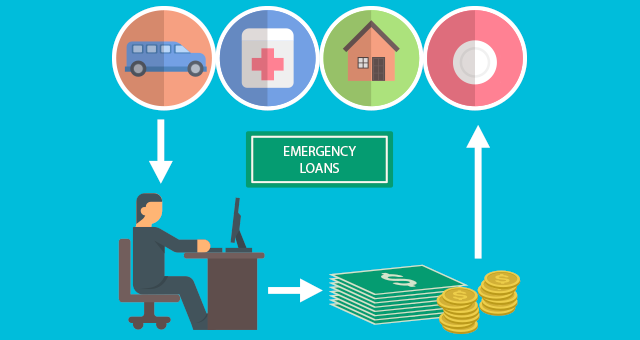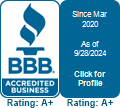
Understanding Emergency Loans: Your Lifeline in Times of Crisis
Life often throws unexpected punches, and they come with a hefty price tag. Whether it’s an unpredictable medical expense, a sudden job loss, a car breakdown, or an unforeseen home repair, these financial emergencies can leave us feeling overwhelmed and financially stretched. Having emergency loans available at such times can be a lifeline to get through difficult times.
In this blog post, we’ll explore what is an emergency loan, the types available, how they work, and some key considerations to keep in mind.
What are Emergency Loans?
Short-term loans intended to meet unplanned, urgent costs are known as emergency loans. They are known for their prompt approval and funding disbursement so borrowers can take care of pressing necessities, like unanticipated business expenses, auto repairs, or medical bills, without interfering with their long-term financial strategies.
What Can You Use An Emergency Loan For?
An emergency loan can be used for almost any kind of financial emergency, including:
- Emergency auto or home repairs
- Unanticipated medical and dental needs
- Job loss or gap in income
- Rent and mortgage payments
- Essential utility payments
- Natural disaster
- Funeral costs.
There are not many limitations on the uses of the funds.
However, emergency loans are typically not eligible for investments, company costs, a down payment on a home, or college tuition.
Types of Emergency Loans
1. Personal Loans
Personal loans are a popular option as they do not usually require collateral and can be used for various purposes, including emergency bills. Credit unions, banks, and online lenders offer these loans. Frequently, they offer more favorable terms and reduced interest rates in contrast to payday loans and credit cards. The periods of personal loans vary from one to five years, with set interest rates. Generally speaking, the loan amount ranges from $1,000 to $50,000. However, getting favorable terms means having a good credit score, and some have origination fees, which can increase the cost of borrowing.
2. Payday Loans
Payday loans are offered walk-in with no credit check as long as you have proof of income and recent pay stubs. It is a convenient way to bridge short-term financial gaps until your next paycheck. However, borrowers beware, as they are known for their exorbitant fees and interest rates, which can force you into an impossible-to-break debt cycle. Typically, the length of the loan is one to four weeks, but a typical loan consumer extends their loans eight times.
3. Credit Cards Cash Advances
If you have a credit card, you can withdraw cash immediately up to a limit. It is convenient. However, the convenience of use is typically offset by higher interest rates and other costs compared to regular credit card purchases, in addition to the rapid accumulation of interest, making it an expensive option over time.
4. Title Loans
A title loan is for borrowers prepared to pledge their vehicle as security, such as a car, truck, motorcycle, recreational vehicle, or boat. The loan amount ranges from $100 to $10,000. It typically has very high interest rates, and the loan repayment term is short (often one month or less). You forfeit your ownership of the vehicle if you default on the loan.
5. Pawn Shop Loan
For a short-term loan, known as a pawnshop loan, you provide a pawnshop with personal collateral, like a musical instrument, priceless jewelry, or a collectible object, in exchange for a loan. The pawnshop will determine the item’s value and make a loan offer based on it. The loan amount will probably be between 25% and 60% of an item’s market value. The pawnshop may sell the item to recover the loan amount if you fail to repay it within the prearranged time frame.
There are not many prerequisites to be eligible for a loan from a pawnshop other than the need for collateral. Usually, no documentation of income or credit check is necessary.
6. Installment Loans
Installment loans are loans paid over a predetermined period in equal monthly payments. This type of loan typically has shorter terms and is the best option for borrowers wishing to spread out their loan repayment over time and make predetermined monthly payments. It facilitates budgeting and payback planning for borrowers.
7. Line of Credit
An additional choice for borrowers is a line of credit. A line of credit stays open after you pay it off. That implies that if you need cash again in the future, you do not have to reapply. Since you are just borrowing a modest sum of money with a line of credit, it’s ideal for unforeseen costs and emergencies.
How to Apply for an Emergency Loan
- Determine Your Needs: Calculate the amount you need to cover your emergency expenses. Take care not to take on more debt than you can afford; doing so will only make it harder for you to repay the loan and lead to unnecessary debt.
- Check Your Credit Score: Your credit score will influence the interest rate and terms of the loan. It’s easier to understand your alternatives when you know your score.
- Gather Documentation: Be prepared to provide identification, proof of income, and other financial documents during the application process.
- Submit Your Application: Many lenders offer online applications for quick approval. Fill out the necessary forms and submit your documents as required.
Things To Take Into Account
When choosing an emergency loan, take into account the following factors:
- Eligibility requirements: Lenders provide better terms to people with higher credit scores. Your alternatives can be restricted, and the cost of borrowing money might increase if you’re trying to improve your credit. You may also need to fulfill additional requirements for qualifying, like age and income.
- Fees and Interest Rates: Understanding the interest rate and other costs related to borrowing money can be beneficial. An emergency loan’s overall cost may rise if the rates and fees are excessive. By comparing rates, you might locate a loan that can fit your budget.
- Processing Time: If you have an emergency, you most likely need the money quickly, so find out upfront how long the lender will take to put money into your account. Different timeframes apply; some take days, while others might pay in a day or two.
- Impact on Credit: Some emergency loans can negatively impact your credit score, especially if you miss payments. Choose a loan that reports to credit bureaus and make timely payments to improve your credit standing.
- Repayment Terms: Consider your ability to repay the loan on time. Failure to pay on time can lower your credit score and result in further charges.
- Alternatives: Before opting for an emergency loan, explore alternatives like borrowing from friends or family, negotiating payment plans with creditors, or tapping into savings.
Conclusion
Emergency loans can provide vital relief in times of financial distress. While they may not be a long-term solution, they provide the essential bridge to weather the immediate crisis and steer toward calmer waters. However, when considering an emergency loan, it’s crucial to weigh your options carefully and understand the terms to ensure you can comfortably manage the repayments. By doing so, you can navigate financial emergencies with confidence and avoid long-term monetary repercussions.
Remember, while emergency loans can offer temporary relief, building an emergency fund should be a long-term financial goal to safeguard against future crises.


